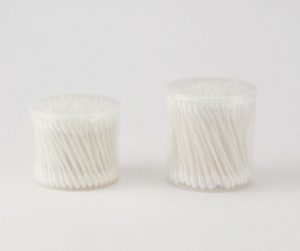When it comes to buying goods, we are often over-served and hence over-charged. Afterward, we become bedazzled by the conglomeration of patterns and colors of the products, wondering why exactly are merchants trying so hard on these unnecessary procedures.
The merchandize world bombards us with extravagant designs in an effort to allude us into making the purchase. Products struggle to stand out in the stores, and in fact good appearances are the major selling point of many fashion brands.
The reality has been cruel. Studies shows that various companies that sell high-end designs do poorly in recent years. The root cause is customers’ loss of interests in fashion in favor of functionalities and comforts. What annoy consumers more is the fact that they have to spend money on things they believe to be irrelevant .
Muji has been the oasis for people who are either thrifty or has grown weary of brands and frills. What makes Muji edge-cutting is the input of “stealth luxury” (Tungate) into daily necessities; as a result, an increasing number of people become willing to adopt the lifestyle proposed by Muji, and Muji benefits from this cystomer loyalty.
Muji’s ability to forecast the trend of customer need is not of luck. This strategic success can be traced to its establishment— Muji carved out its niche in 1980, a time when Japanese markets was polarized between the low-quality domestic goods and expensive imports from Western countries. Muji integrated the opposite, focusing on both “no brand” and “good quality”, according to Carren Jao; one of the most important value proposition of Muji is to offer a “restoration of the vision of products” to the usefulness.

Muji believes cotton buds do not need to that long.
Muji thrives also because of its production efficiency. Muji achieves the minimal manufacturing cost via material selection, streamline processing and packaging simplification. It purchases large amount of raw materials at low prices and abandons decorating procedures that do not contribute to production’s functionality and quality. Muji also conducts in-houses investigation as a mean to keep itself updated with customer needs.
Furthermore, Muji successes ethically. It goes beyond social regulations, making extra effort to trace the origin of the material in an attempt to discourage illegal trade. Additionally, Muji recruits disabled people who otherwise may never have chances to work and make contributions.
Strategies, efficiencies and ethics are three essential input for a sustaining business. If the physical assets make up the bulk, strategies and efficiency count as its intellects and ethics the spirit.
[word count: 403]
reference:
Schlossberg, Mallory. “Women Have Abandoned a Longtime Wardrobe Staple – and That’s Terrifying News for Michael Kors, Coach, and Kate Spade.” Business Insider. Business Insider, Inc, 2015. Web. 01 Oct. 2016.
@LizSegran. “The Decline Of Premium American Fashion Brands. What Happened, Ralph And Tommy?” Fast Company. N.p., 2016. Web. 01 Oct. 2016.
Jao, Carren. “How Muji Created a Cult Following of Design Enthusiasts.” Entrepreneur. N.p., n.d. Web. 01 Oct. 2016.
“About MUJI.” MUJI USA. N.p., n.d. Web. 01 Oct. 2016.
By Contrast, Green Marketing Focuses on Promoting Sustainable Products and Production Processes for the Benefit of the Company, the Customers, and the Environment. “Sustainable Business.” RSS. N.p., n.d. Web. 01 Oct. 2016.
Ying.Wei. “Muji: On Strategic Marketing.” Ying Weis Blog. N.p., 2009. Web. 01 Oct. 2016.
Killingsworth, Silvia. “The Commercial Zen of Muji.” The New Yorker. N.p., 2015. Web. 01 Oct. 2016.
“MIT Architecture.” What MUJI and Design Can Offer the World of the Future. N.p., n.d. Web. 01 Oct. 2016.